
Grub Facts & Information
The concerns of a grub infestation at home include potential damage to lawns, gardens, and root systems of plants, leading to weakened vegetation and possible long-term impacts on the health and appearance of the landscape.
Risks of Grubs
Lawn and Garden Damage
Grubs are the larvae of beetles, such as Japanese beetles, June beetles, or European chafer beetles. They live in the soil and feed on grass roots, causing damage to lawns, turf, and gardens. As they consume the roots, affected areas can become brown, weak, or even die off. This can result in patches of thin or bare grass, uneven growth, and a weakened overall lawn or garden. Severe grub infestations can require extensive lawn repair or reseeding to restore healthy vegetation.
Attraction of Pests
Grubs in the soil can attract other pests to your lawn or garden. Animals such as raccoons, skunks, or birds may dig up your yard in search of grubs as a food source. These animals can cause additional damage by uprooting plants, creating unsightly holes, or leaving behind debris. Their foraging behavior can exacerbate the existing damage caused by grubs and create additional disruptions to your outdoor space.
Vulnerability to Drought and Environmental Stress
Lawns and plants infested with grubs are more susceptible to drought and environmental stress. Since grubs feed on grassroots, affected plants have weakened root systems, reducing their ability to withstand dry conditions or recover from stress. This can lead to increased water requirements, reduced drought tolerance, and an overall decline in the health and resilience of your lawn or garden. Additionally, the presence of grubs can attract other pests or pathogens, further compromising the condition of your plants.
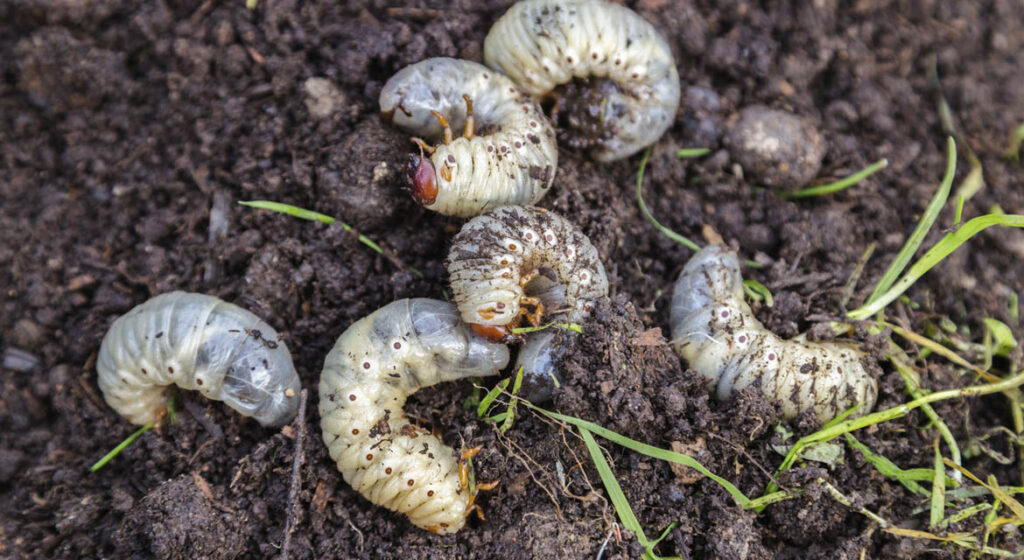
Truly Nolen GUARANTEE
If you’re not completely satisfied, you’ll get a full refund on your most recent service with our 100% money back guarantee.
Common Species of Grubs
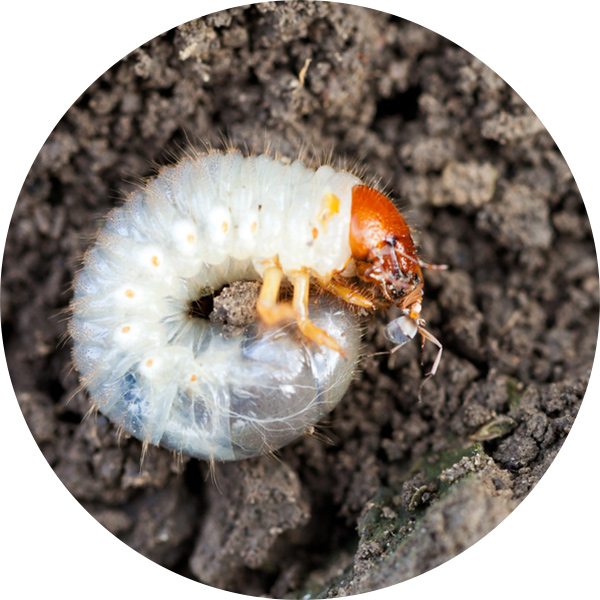
White Grub
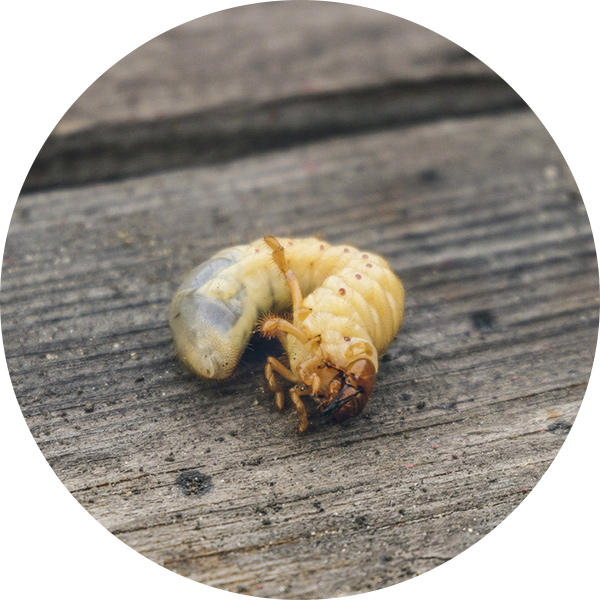
Chafer Grub

Wireworm
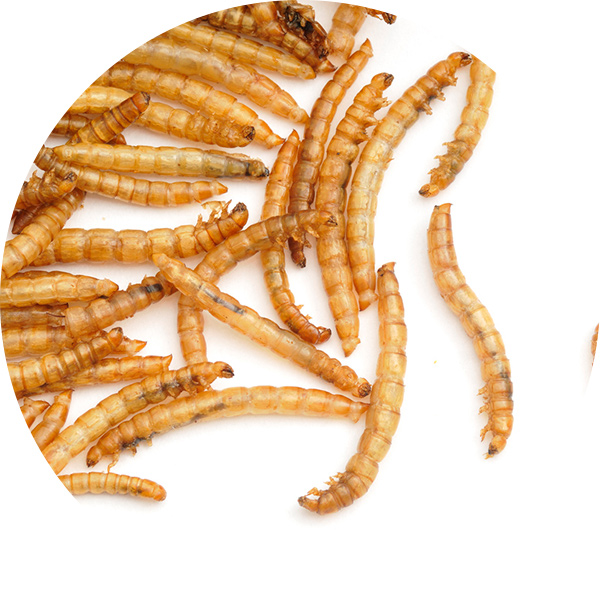
Mealworm
How To Identify Grubs
Grubs are the larval stage of beetles and can be identified by their C-shaped, cream-colored bodies with distinct brown heads and six legs near the head. To identify a grub infestation at home, look for signs such as brown or dead patches of grass that easily lift away from the soil due to root damage, presence of adult beetles in the vicinity, or observing grubs while digging near the affected areas.
Grubs Appearance
Grubs are the larval stage of various beetles, such as Japanese beetles, June beetles, or chafer beetles. They have soft, white, or cream-colored bodies with distinct C-shaped curvature. Grubs typically have three pairs of legs near their head and a brown head capsule. They vary in size but can range from a few millimeters to several centimeters in length depending on the species and stage of development.
Grubs Habitat
Grubs are primarily found in the soil, where they inhabit the root zone of plants. They prefer moist, well-drained soil and are commonly found in lawns, gardens, agricultural fields, and other grassy areas. Grubs feed on the roots of various plants, including grasses, vegetables, and ornamental plants. They are especially problematic when they occur in high populations and cause significant damage to the root system.
Grubs Diet
Grubs are voracious feeders that primarily feed on plant roots. Their diet consists of organic matter, including grass roots, plant roots, and decaying plant material in the soil. As they feed on the roots, they can cause significant damage to the plants, leading to wilting, yellowing, and even death of the affected vegetation.
Grubs Behavior
Grubs are typically active in the soil, where they feed on roots and burrow through the organic matter. They tend to move deeper into the soil during colder months and move closer to the surface in warmer months. Grubs have a relatively slow movement and spend most of their time feeding and growing. They are often found in aggregations, especially in areas with high organic content in the soil.
Grubs Reproduction
Grubs are in the larval stage of beetles and undergo complete metamorphosis. Adult beetles lay their eggs in the soil, often near or in areas with suitable food sources for the developing grubs. The eggs hatch into small larvae, which then molt and grow through several instars or stages. The development period of grubs varies depending on the species and environmental conditions. Once they complete their development, grubs pupate in the soil, and adult beetles emerge from the pupae.
Grubs Prevention
Prevention and control of grubs often involve implementing various cultural, biological, and chemical methods. Maintaining a healthy and well-maintained lawn or garden can help prevent grub infestations. Adequate watering and fertilization practices promote strong root systems that are more resilient to grub damage. In severe cases, chemical insecticides specifically labeled for grub control can be applied, following product instructions and considering environmental impacts. It is important to identify the grub species correctly before choosing appropriate control measures, as different species may have varying susceptibility to control methods.
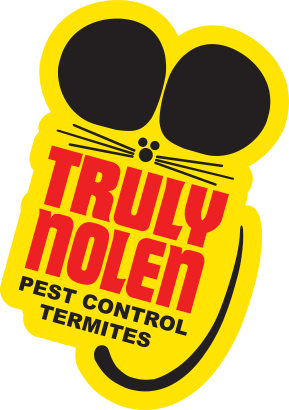
$50 Off Year Round Pest Control
Truly Nolen is a family-owned company with 85 years of experience providing the best pest control. If you’re not completely satisfied, you’ll get a full refund on your most recent service with our 100% money back guarantee.
The Truly Nolen Approach
Environmentally Conscious
We work to minimize our impact on the environment by using naturally occurring materials whenever possible.
Pet Friendly
Truly Nolen uses an Integrated Pest Management (IPM) approach designed with your pets in mind.
100% Money Back Guarantee
If you’re not completely satisfied, you’ll receive a full refund on your most recent service.
How Truly Nolen Gets Rid of Grubs
Truly Nolen typically follows a process for treating a grub infestation that involves several steps. First, a thorough inspection is conducted to assess the extent of the infestation and identify affected areas. Next, targeted treatments are applied, such as insecticides or biological control methods, to effectively eliminate the grubs. Additionally, cultural practices like improving soil conditions and promoting healthy lawn care practices may be recommended to prevent future infestations. Ongoing monitoring and follow-up visits are conducted to ensure the success of the treatment and address any remaining concerns.
Frequently Asked Questions
How do grubs damage my lawn?
Grubs damage lawns by feeding on the roots of grass and other plants. This feeding activity weakens the root system, causing the affected areas to turn brown, die off, and become easily detachable from the soil. Learn More!
How do I know if I have a grub infestation?
Signs of a grub infestation include brown or dead patches of grass that can be rolled back like a carpet due to the lack of roots, an increase in wildlife activity like birds or skunks digging up the lawn to feed on grubs, and the presence of adult beetles flying around the affected area. Learn More!
When is the best time to treat a grub infestation?
The best time to treat a grub infestation is typically in late summer or early fall when the grubs are still small and closer to the soil surface. Treating during this period helps prevent further damage to the lawn and reduces the risk of future infestations.
Can I get rid of grubs naturally?
Yes, there are natural methods to control grubs, such as introducing beneficial nematodes or milky spore disease to the soil. These biological control methods target grubs specifically and can help reduce their populations over time.
Do all lawns require treatment for grubs?
Not all lawns require treatment for grubs. If the grub population is low and the lawn shows no signs of damage, treatment may not be necessary. However, if there are visible signs of damage or a history of grub infestations, proactive treatment can help protect the lawn and prevent future issues. Consulting with a lawn care professional can help determine the appropriate course of action.


